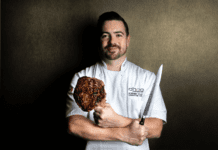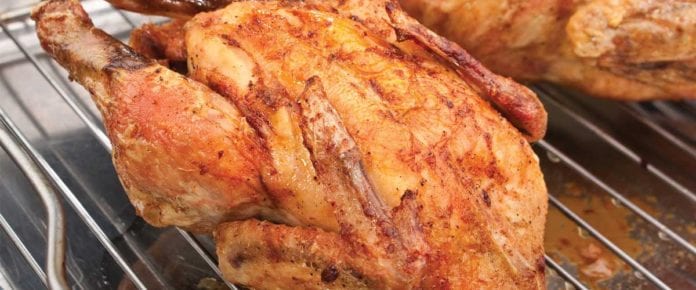Chris Koehler recalls the days when he was introducing combi ovens to the North American market. “Back then, we’d sell maybe one unit a month and celebrate the deal, despite the fact they had been used by chefs in Europe for 20 years,” says the partner for Mississauga, Ont.-based Chesher Equipment Ltd. “Even the deals that did get made were for large-scale healthcare institutions and big hotels looking for a way to increase efficiencies and generate high volumes,” he adds. “For the most part, people didn’t understand why they should have one.”
Over time, operators learned that combi ovens could help pare down their traditional lineup of convention ovens, steamers, burners, skillets and/or kettles. Once the notion caught on — and the capabilities expanded — combi ovens became a mainstay for operations of all shapes, sizes and functions.
Originally units were comparatively basic, offering steam, dry heat and convection options — or combinations thereof. The first major innovation came in 2004, when ovens turned into self-cooking centres, which allowed cooks to indicate what was being cooked, how it was to be cooked and the oven could program itself accordingly. This was followed by full-on recipe development where chefs had even more control over end results.
Now, combi ovens can be used for almost every cooking function imaginable, including steaming, slow cooking, sous vide, smoking, roasting, braising, baking, proofing, frying, pasteurizing and canning/preserving — or just plain old retherming. They can even cook multiple types of dishes at the same time without any cross contamination of flavours. They’re also Internet savvy, featuring advanced Wi-Fi or Bluetooth connectivity.
The main appeal for operators is the time- and labour-saving benefits of combi ovens while ensuring consistent output. For those interested in the energy-efficiency/LEED side of things, combis also have the added advantage of less water and power usage. Operators can choose from compact models starting around the $5,000 mark up to $48,000 for the largest roll-in models, depending on desired features.
For operations such as the Calgary Telus Convention Centre, combi ovens are an absolute must. “During the busy season we can run up to 20,000 covers within three months,” says Eric Larcom, executive chef. After 10 years, the Centre upgraded its three Rational combi ovens to the company’s new whitefficiency models at a cost of about $48,000 a unit.
The upgrade was about shaving time off labour, Larcom explains. “With the older units we had to pre-mark steaks and chicken on the grill to get a nice sear. Now, those features are built in. That saves us thousands of hours in production time.”
Larcom uses the units for just about everything — from steaming and grilling to overnight cooking and smoking. “These things are pretty advanced. Each rack holds 28 trays and we can program each individual tray to cook at different times and temperatures. We simply take a full rack, wheel it in and push a couple of buttons. Our cooks are then free to focus on other duties, such as sauces and plating.”
Larcom says he particularly likes the smoking and steaming functions. “It’s amazing for pasta, rice and vegetables. We still have steamers, but with the Rationals we can have everything going at the same time.”
The units can also be programmed in “unimaginably” different ways, he adds. “There’s an actual turkey feature that will hit it with steam, baste it and turn the temperature up and down to brown the skin — it’s pretty smart.”
The slow-and-low features also means Larcom and his team can set the oven at noon to start at midnight for slow cooking. “It also has an amazing self-cleaning feature — you just put a puck in, shut the door and an hour later it’s brand new again.”
Combi ovens can alleviate staffing shortages because of their ease-of-use and overall productivity, Larcom adds. “It’s not just Calgary, everyone in our industry across Canada and the U.S. is having trouble finding chefs.”
Staff receive a three-hour training course on the units. “There are so many features, you can’t really learn it yourself,” Larcom says.
For Copper Branch, a fast-food-style vegan restaurant chain in Montreal, compact-size combi ovens are proving to be the perfect workhorse for their new and growing operations. The chain opened its first location in 2014 and now has six units — each home to a brand new Alto-Shaam CT PROformance 7-20 Combitherm oven.
“We’ve always wanted combi ovens because we don’t fry; we only oven bake,” says Andrew Infantino, marketing director for Copper Branch.
The combi ovens work alongside two MerryChef rapid cook ovens to produce the entire menu for its 20- to 30-seat locations. The Alto-Shaams are used for larger vegetables and other items that are more on the prep side, Infantino says. “We use them to cook fries, steam broccoli, cook chick peas and black beans — anything that requires more time.”
Some Copper Branch locations are quite small; about the size of a food court kiosk, Infantino reports, so the units, which have a six-tray capacity, allow them to do the quantities they need without too much of a footprint.
Alto-Shaam stood out because of the quality and what it could do, he adds. “It has a great display and easy-to-use push button controls. That was really important because we wanted something that would be as easy to use as possible for our staff. It also has lots of features for steaming, oven baking and convection and they’ve all worked out well.”
When Olivier & Bonacini took over operations at the Trump International Hotel & Tower in Toronto, Markus Bestig, executive chef, America Restaurant & Events says he inherited his full-size combi ovens, along with a complementary blast chiller, from Alto-Shaam.
While there are lots of things one can do with combi ovens, Bestig admits he tends to use them for more conventional cooking. “Because sous vide is a big part of what we do, we use the combi ovens mainly for large-batch cooking, including roasting, braising and steaming, as well as reheating during service for events.”
Bestig is no stranger to what combi ovens can do, having worked with them in Europe for a number of years. The two units in the main kitchen get some assistance from an additional two 10-rack units in a satellite kitchen that are used for reheating for banquets. “There are no stoves up there, so they’re a big help when things get busy,” Bestig says.
While much of the staff training at the restaurant focuses on prepping food from scratch, Bestig sees substantial value in combi-oven capabilities. “The possibilities are endless if you want to get into the programming world. They can be set up for any environment. The only thing that might hold anyone back is cost. But once people have one they never want to lose it.”
Written By: Denise Deveau
Volume 48, Number 9

















